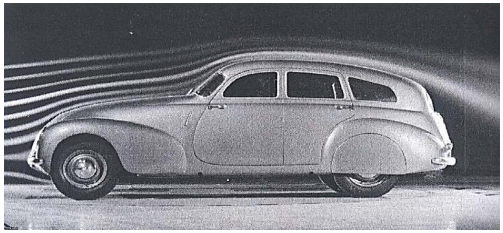Analisis Aerodinamika pada Bodi Mobil Listrik Kalimasada Tipe Bodi Urban Concept dengan Pendekatan Computational Fluid Dynamics
DOI:
https://doi.org/10.36499/jim.v20i2.11604Keywords:
aerodinamika, CFD, drag, lift, mobil Kalimasada.Abstract
Peningkatan efisiensi energi merupakan salah satu tantangan utama dalam pengembangan kendaraan listrik. Penelitian ini bertujuan untuk mengoptimalkan desain aerodinamis bodi mobil listrik Kalimasada tipe urban konsep. Metode yang digunakan dalam analisis numerik dengan simulasi CFD untuk memprediksi karakteristik aerodinamika serta mengamati fenomena aliran yang terjadi. Hasil simulasi menunjukkan bahwa desain bodi mobil Kalimasada saat ini memiliki potensi untuk ditingkatkan dari segi aerodinamis, dimana pada nilai koefisien gaya hambat dan gaya angkat mengalami penurunan seiring meningkatnya kecepatan aliran fluida. Perbandingan dari hasil simulasi yang terjadi dengan kecepatan yang sama antara desain bodi mobil Kalimasada, Antawirya, dan Nogogeni. Nilai koefisien gaya hambat pada desain bodi mobil Kalimasada dengan desain bodi mobil Antawirya menghasilkan nilai persentase perbandingan sebesar 18,6% sedangkan nilai koefisien gaya hambat pada desain bodi mobil Kalimasada dengan Nogogeni menghasilkan nilai persentase sebesar 38%. Oleh karena itu pada analisis lebih lanjut diharapkan melakukan modifikasi pada desain mobil, sehingga dapat diharapkan meningkatkan efisiensi aerodinamis pada kendaraan.
References
Anderson, J.D. (2011) Fundamentals of Aerodynamics (6th edition), PLoS Computational Biology.
Aprillia, R.N. (2023) ‘Aerodynamic Analysis of Urban Single Seater Vehicle Body using Computational Fluid Dynamics ( CFD ) method, (229), pp. 95–102.
Faisal Saleh, B.A.D. (2024) Buku Pedoman Kontes Mobil Hemat Energi (Kmhe) Tahun 2024, Balai Pengembangan Talenta Indonesia Pusat Prestasi Nasional Kementrian Pendidikan, Kebudayaan, Riset, dan Teknologi. Jakarta.
Hasugian, T.D. (2018) ‘Simulasi Aerodinamika Pada Mobil Listrik Nogogeni Dengan Menggunakan Software ANSYS Fluent’, p. 100.
Iverson, B.L. and Dervan, P.B. (2018) ‘Studi Koefisien Drag Aerodinamika pada Model Ahmed Body Terbalik Berbasis Metode Numerik’, Teknik Mesin, 7, pp. 7823–7830.
Malalasekera, H.K.V. and W. (2020) An Introduction to Computational Fluid Dynamics, Open Journal of Fluid Dynamics.
Pradana, M.B. et al. (2024) ‘Analisa Aerodinamika Mobil Listrik menggunakan Ansys ( Studi Kasus Mobil Bharata )’, 3(1), pp. 24–33.
Pritchard, P.J. (2008) Fox And Mcdonald’s Introduction To Fluid Mechanics Eighth Edition. 8 th edition.
Sapienza, L. (2002) ‘Basics of vehicle aerodynamics’, Technology.
Saputra, Y. et al. (2020) ‘Perancangan bodi mobil hemat energi tipe urban bono kampar’.

Downloads
Published
How to Cite
Issue
Section
License

This work is licensed under a Creative Commons Attribution 4.0 International License.
Authors who publish with this journal agree to the following terms:
The journal allow the authors to hold the copyright without restrictions and allow the authors to retain publishing rights without restrictions.
Authors retain copyright and grant the journal right of first publication with the work simultaneously licensed under a Creative Commons Attribution License that allows others to share the work with an acknowledgement of the work's authorship and initial publication in this journal.
Authors are able to enter into separate, additional contractual arrangements for the non-exclusive distribution of the journal's published version of the work (e.g., post it to an institutional repository or publish it in a book), with an acknowledgement of its initial publication in this journal.
Authors are permitted and encouraged to post their work online (e.g., in institutional repositories or on their website) prior to and during the submission process, as it can lead to productive exchanges, as well as earlier and greater citation of published work (See The Effect of Open Access).

This work is licensed under a Creative Commons Attribution 4.0 International License.








